Libraries for schools – Boosting reading with our Story Centre
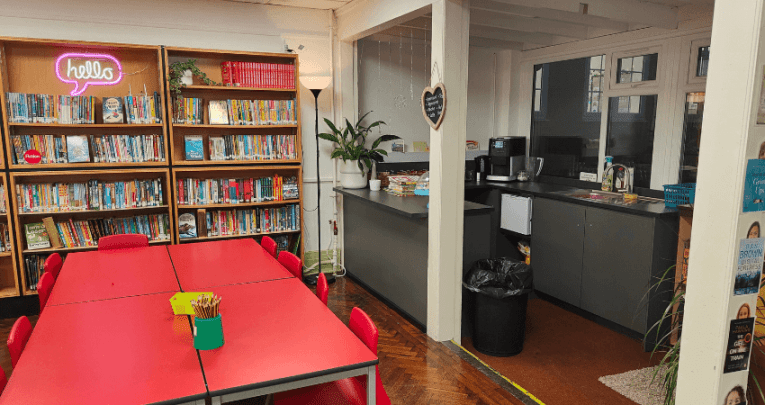
Rachel Sligo explains how a new ‘Story Centre’ at Pegswood Primary is transforming attitudes to reading across the whole school community…
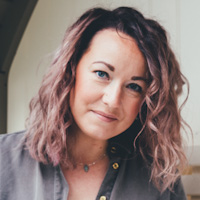
- by Rachel Sligo

During the pandemic, our school library became a dead space; unused, full of out-of-date books and in need of bringing in line with our pupils’ current interests and experiences.
As a teacher with a love of literacy and reading, I knew there must be something we could do to create a better space. Somewhere children would not only feel comfortable engaging with books, but where those who weren’t confident with reading wouldn’t feel out of place.
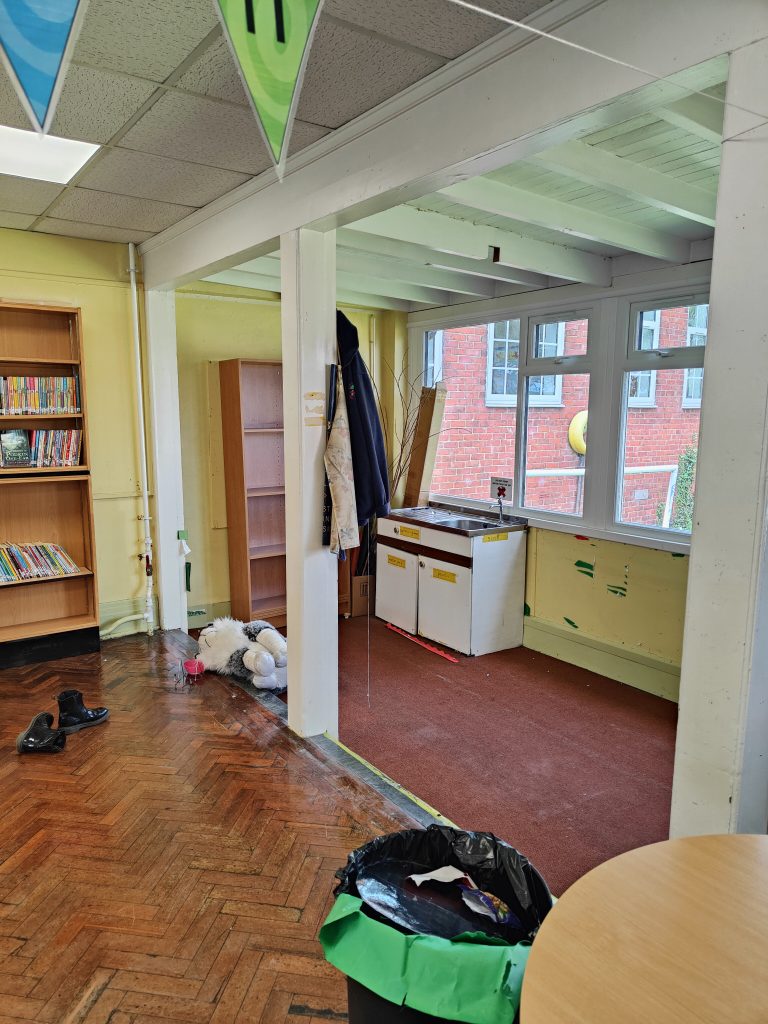
We got support from the whole school and our wider community, including the North of Tyne Combined Authority. Our Story Centre is now so much more than a library.
Transformation
When looking at the space, it was clear it would be hard to get children and parents into the library. As a result of Covid-19, we were seeing less parental engagement, and many students simply didn’t have the confidence to pick up a book on their own. In our local area, we have brilliant libraries, but even with access to these, only 19 per cent of our KS2 students visit libraries outside of school. So, to turn the library into a warm and inviting space, we completely remodelled the room.
We began by exploring the options available to help fund the project. As a participant in the National Professional Qualification (NPQ) for Leading Literacy (provided by the Three Rivers Teaching School Hub), I was able to apply to the North of Tyne Combined Authority for support.
We were delighted when our application was accepted. We received £5,000 to support disadvantaged pupils and those disproportionately affected by the pandemic, which helped us with the costs greatly.
To ensure we didn’t disrupt the school, we worked over May half-term and the summer holidays. We also recruited help from friends and family to keep costs down. Come September, the new space had been created, our idea had come to fruition, and our old school library was now the Story Centre.
What is the Story Centre?
We’ve just come to the end of an incredible first term with the Story Centre fully up and running. The activities and its impact so far have been wonderful.
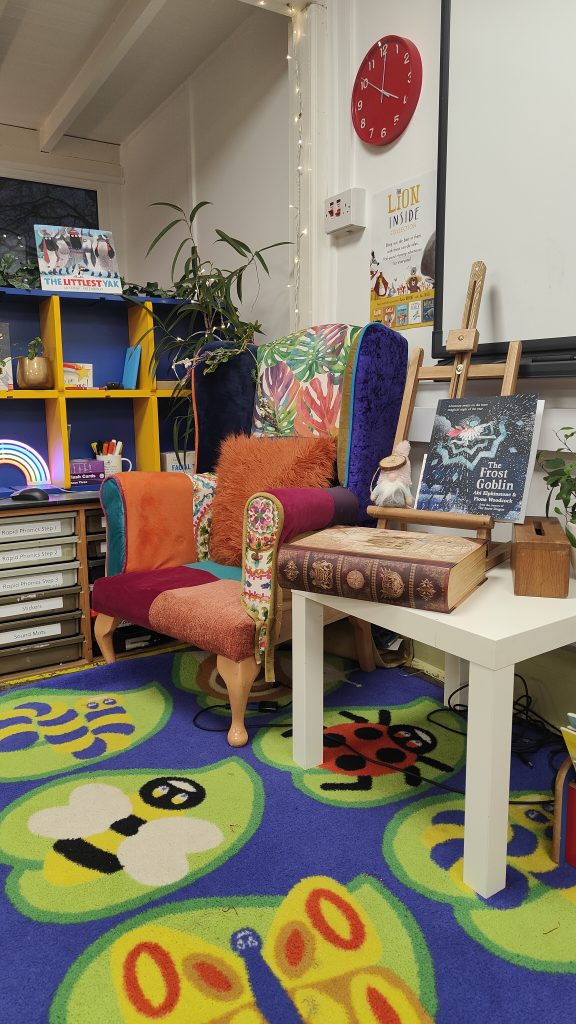
It’s a comfortable space where students can be loud if they want to
We have tried to make it feel very different from a traditional library: providing a hub to engage families with every aspect of storytelling, not just reading.
The area is filled with visual displays. There are seating areas and cushions where we can chat about books, and enjoy and engage with stories together. We built the space to be accessible to everyone.
Children who are less confident with reading can still feel comfortable here, engaging with books through bookmark making or listening to storytelling. Getting learners interested in books slowly, and through avenues that suit them, is just as important as reading.
We also wanted to ensure that the space is inclusive to all types of learning. Some students with SEND can struggle to sit still and be quiet, so curating a space where both quiet reading and loud learning can co-exist was very important to us.
It’s packed with relevant stories, and provides access to real authors
We made it a priority that the books and stories we offer are diverse and reflect our students, so that they can see themselves in the books they read. However, it was equally as important to us that we engage with authors and writers themselves.
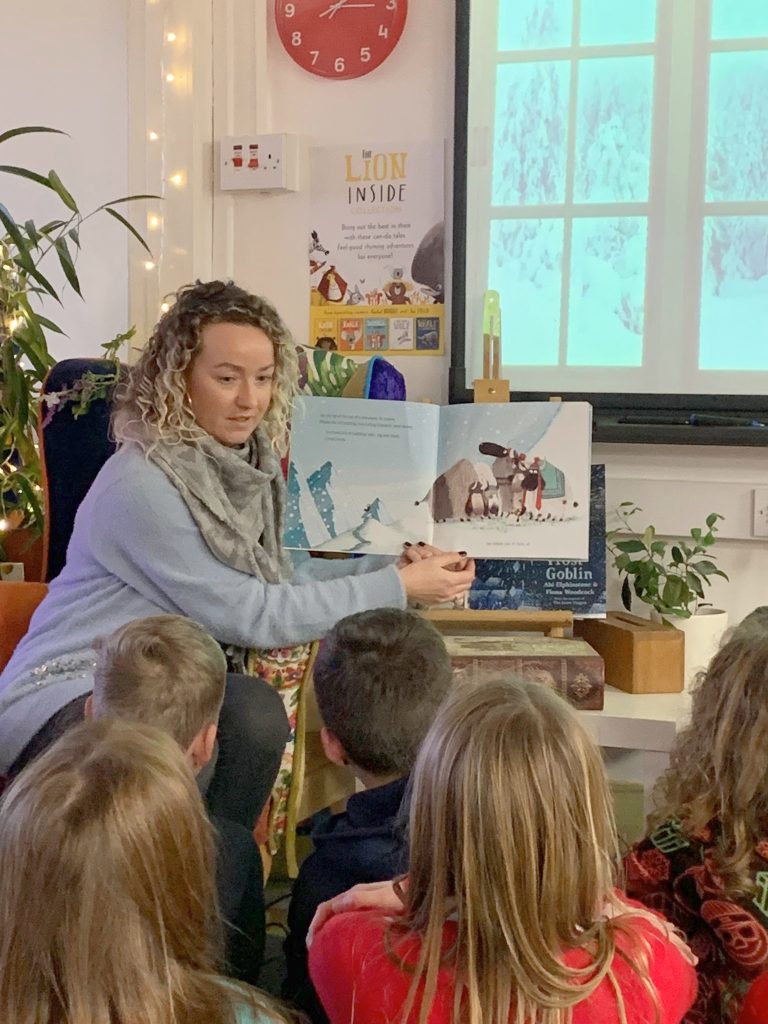
A recent Pegswood School student survey showed that only 16 per cent of KS2 children in our school could name five children’s authors. We wanted to address this by inviting a wide range of writers into the Story Centre, giving our children the opportunity to interact with creators from different backgrounds and walks of life. Pupils have had the chance to engage with authors such as S.F. Said, Hannah Gold and Jennie Pearson. When children meet the writers of stories they love, their interest and engagement go through the roof.
And we don’t just limit these events to our students. We encourage parents and carers to come along too, so they can see firsthand how much joy reading and storytelling can bring. We also encourage parents to donate books on our reading list, rather than buy presents for staff.
It’s a hub for the community
We want the Story Centre to also be a meeting place for the whole community, and that is becoming a reality. For example, we hosted a workshop in partnership with a local business, where members of the community built autumn wreaths. Not only did this provide a chance to show off our Story Centre and act as a community hub, it was a fundraiser too.
Looking to the future
With our Story Centre, I wanted to make sure that we were creating a space that was enjoyable for all. It shouldn’t create more work for teachers. And it must provide a wonderful space for our students and their families to visit.
We’ve achieved so much in our first term. I can’t wait to see the long-term impact of this space, and what we go on to do with it next. Not just for our students, but for our whole community.
Getting everyone on board
- Be loud and clear about your vision. Enthusiasm is infectious.
- Take some of the pressure off your colleagues by becoming an expert in children’s books.
- Make sure the library has something for everyone, even if that isn’t reading.
- Find like-minded people in the community or online, so you can ask advice and share ideas.
- Read! If you get lost in books, that will filter down to the pupils.
- Be creative about fundraising and funding. Competitions, raffles, sponsored reads, weekend workshops and grants have made it possible for us to book various author visits and events.
Rachael Sligo is an English lead teacher at Pegswood Primary School. To find out more about literacy and initiatives in this area, please visit tinyurl.com/tp-NoT













